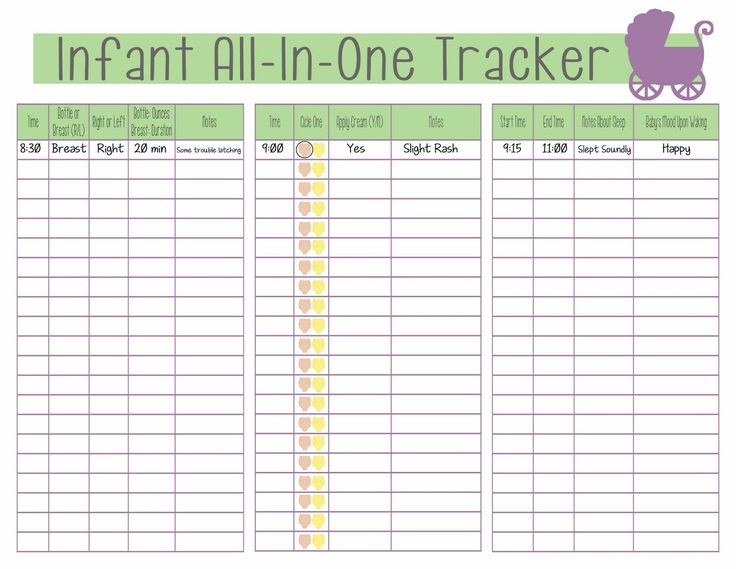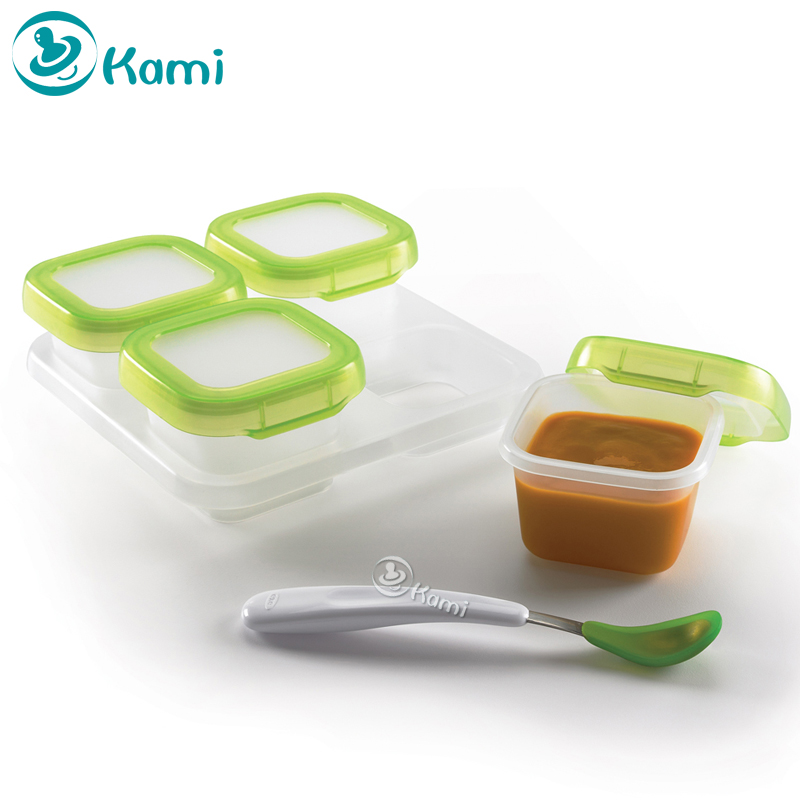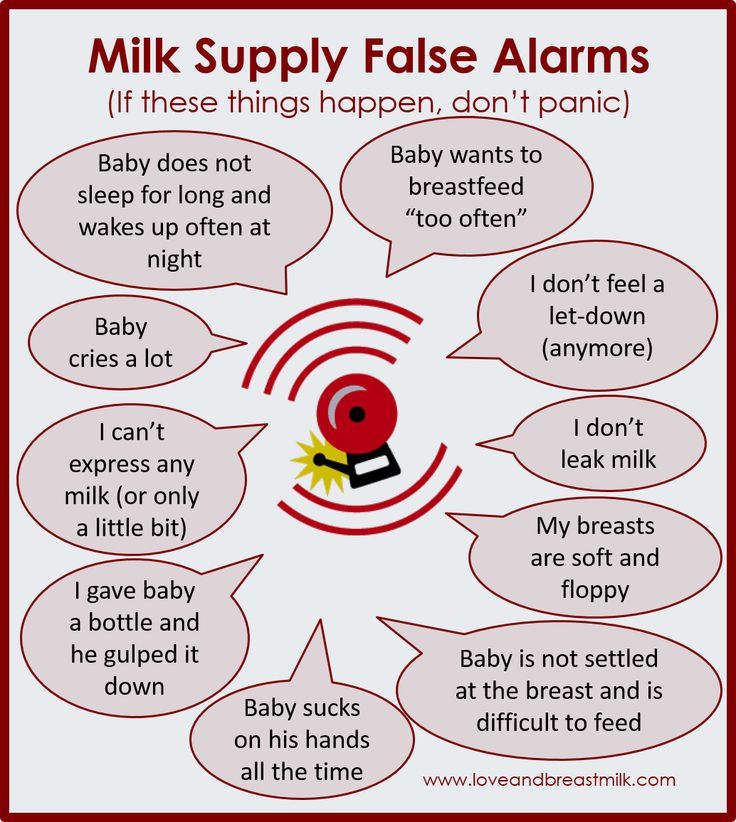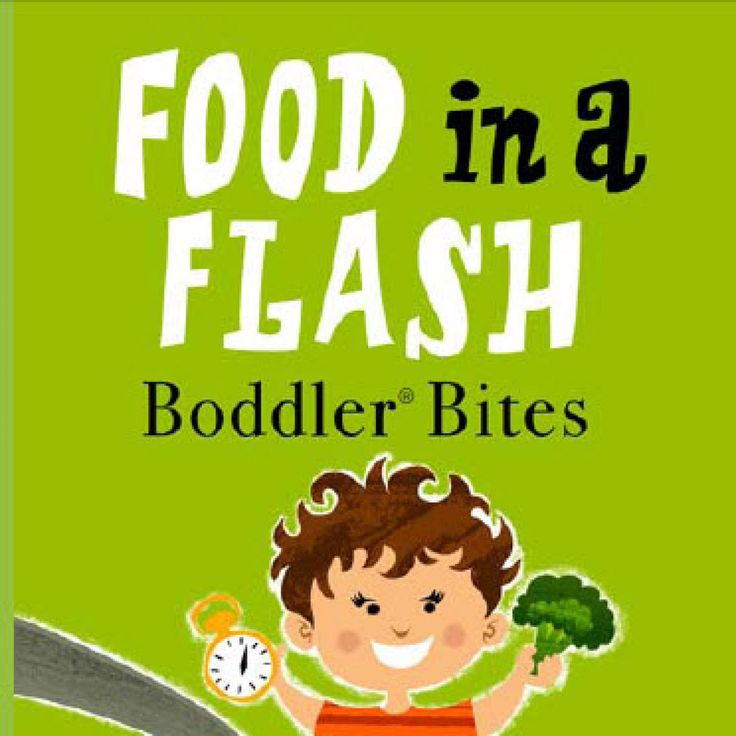Baby feeding diaper log
Why Baby Feeding & Diaper Logs Work (With Printables!)
by Rachel NormanWhat's in this post...
Baby logs help you keep track in those early days of feedings, diaper changes, and the little things mom need to do to stay sane.
When I had my firstborn, I was feeling all over the place.
We lived in a new house in a new country and I was in control of so little going on around me. What was one thing I could feel good about?
My days with my precious newborn.
In those early days, my midwife wanted me to keep track of diaper changes and how well my lovely fed.
Something to check off when the whole world feels out of control?
DONE
So in case you’re in the same spot, wanting to keep track of baby’s feeds, diaper changes, AND – oh and this is so important – your own basic self-care… then read on.
Why baby logs are helpful
Keeping a baby log can be extremely helpful. Not only does it alleviate the stress of “did I do that?”…it also makes you feel more in control.
I remember being at the pediatrician with my second and not remembering how many diaper changes my son had….I felt so silly.
Things that are helpful to log are…
- Baby feedings with time stamp (including how many ounces and/or what side)
- A log of sleeping times
- Diapers- including what type of diaper and a time stamp
- A daily mood tracker
- Mom self care log (remember that it’s important to take care of you too… see my log printable for details here!)
- A grateful list
- A log of daily routines
- Observational notes for the day
- A notation of tweets, or changes that can be made
Logs are helpful when you’re trying to get baby onto a routine
One of the best things you can do for baby is to start establishing routines. Start using your log to see what happens in your day and evaluate your trouble spots.
With notes and a clear picture, you can create better routines that benefits everyone.
- Newborn Sample Routine
- Ultimate Newborn Sleep Schedule
- 3 Month Old Baby Schedule
- Sample 6 to 9 Month Schedule
- 18 Month Sample Schedule
- 2 Year Old Sample Schedule
- 3 Year Old Sample Schedule
Logs are helpful when you start sleep training
As new mothers, our life can easily revolve around baby’s sleep schedule.
The truth is this….babies ability to sleep well is a direct result of their routine.
I learned early on that if baby was over tired (awake too long), he was so grumpy that he almost couldn’t be consoled.
I don’t know about you, but for me, my day can sometimes get away from me.
Before I know it… hours have passed and I’m on a different schedule than I was on yesterday.
This is not good for a baby who is working on establishing a healthy sleep routine. Babies need a consistent routine to get those healthy habits started.
A baby log can help! Whether you do schedules naturally or not, keeping a log can keep you on track.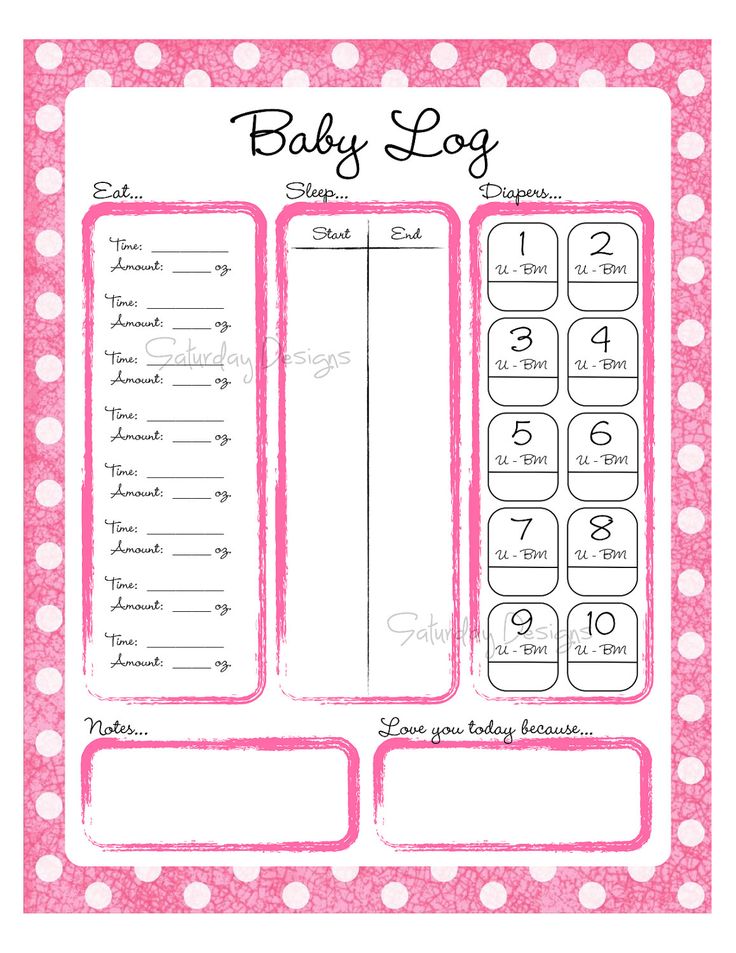
If baby is sleeping on a healthy routine, everyone in the house is happier. This is especially true to mom!
Read: Cocooning a Newborn & 7 Reasons Why it Can Be Good For The Family
Mom self care logs are helpful so you don’t forget yourself!
Let’s be honest for a moment…
How many times have you forgotten yourself or passed on general self help for you because of baby?
Moms tent to ignore their own needs when babies come along. Of course it’s our job to focus on baby, but we can’t stop taking care of ourselves. After all, taking care of ourself will better equip us to take care of baby!
Mom self care log items included in the printable…
- Showered/washed face
- Brushed teeth
- Drank water
- Ate a nutritious meal
- Laid down to rest/nap
- Took a break from a device
- Talked with a friend
- Prayed or medicated
- Read something encouraging
- and more…
Get your own baby logs here
Without a doubt, the Daily Logs for Mom and Baby are a useful tool for any mom! You’ll feel more in charge and will be able to stop stressing over the little things.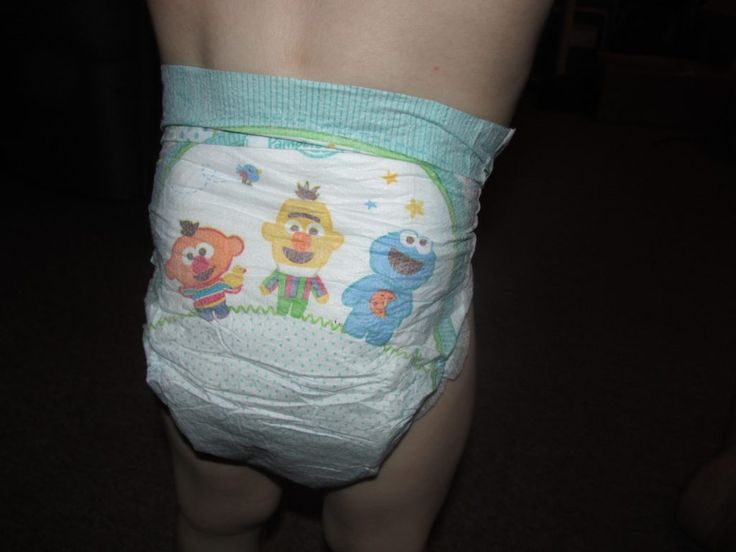 Keep good logs and feel confident!
Keep good logs and feel confident!
You got this, momma!
Sources:
- The importance of schedules and routines
- Routines minimize chaos which promotes resilience and regulation
- Routines indicators of predictable family life contributing to childhood development
Family Routines Reboot
Take our 3 day challenge to create life-giving family, child, and self-care routines.
Learn More
::
Filed Under: Baby Schedules & Routines, Routines
Tagged With: Baby, Breastfeeding Hacks, Diaper Hacks, Feeding Tips, New Mom, Newborn
Is Your 1-Year-Old Wearing You Out? Try These Simple Activities
Wind-down Routines Guaranteed to Help Your Baby Sleep
Daily Routine Brainstorm SHEETS
Get my cheat sheets (newborn up to elementary aged kids) and find your family’s groove.
Use them for:
- nap times
- meal times
- bedtimes
- chore times
- play times
- AND more!
Reader Interactions
Best Baby Feeding and Diaper Tracker Tools & Apps of 2022
Keeping track of all of the details about your baby’s sleep, feedings, and diapers can be overwhelming… especially when you can’t remember the last time you slept more than 3 hours in a row. That’s why one of my top pieces of advice for new moms is to find a Baby Feeding and Diaper Tracker app.
That’s why one of my top pieces of advice for new moms is to find a Baby Feeding and Diaper Tracker app.
When I started my new life with a newborn (a life in which I saw 2 am with more regularity than ever before) I kept a notebook by my bedside. Inside, my husband and I religiously wrote down what time our baby ate, produced stool, and slept. If only I would have known then that there are tons of great tools, including Baby Feeding and Diaper Tracker apps, that make it a little easier.
We keep this post updated with the latest and greatest diaper tracking and baby feeding app options. Because there are two things in life that change in the blink of an eye; technology and babies!
| Best of… | Best Tracker Tools & Apps |
|---|---|
| Overall Best App for New Moms | Talli Baby |
| Best for Tracking Weight & Feedings | Hatch Baby Smart Changing Pad |
| Best for Diaper Tracking | Ovia Parenting & Baby Tracker |
| Top App for Breastfeeding Moms | Talli Baby |
| Must-Have for Apple Watch Lovers | Glow Baby |
The Best Baby Feeding Apps and Diaper Trackers
Talli Baby
Talli Baby is definitely one of the top baby tracking apps out there.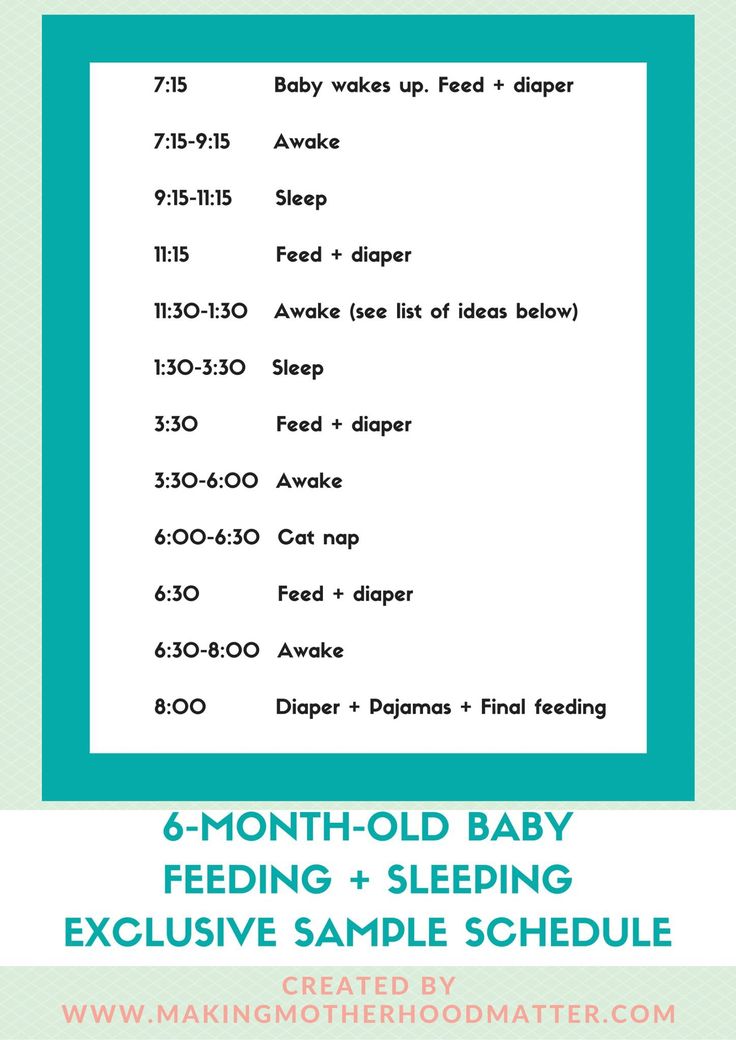 I am eternally grateful for how easy it was to track everything with my last baby through this app and I couldn’t recommend it more highly!
I am eternally grateful for how easy it was to track everything with my last baby through this app and I couldn’t recommend it more highly!
While you can use the app by itself, what really sets Talli Baby apart from all the rest is the Talli Baby Tracker device. Rather than having to fiddle with your phone, you simply press a button on the device and it tracks it for you. You can log feedings, diapers, sleep, and more. It can even help remind you which side you breastfed on last! I set my device up in our nursery which made tracking in the middle of the night a breeze.
The app and device are both super easy to use. I also really love that the app helped me feel prepared for doctor’s visits (which can be intimidating!) with all the important information about my baby’s schedule right at my fingertips. Through the app, you can also share your baby’s data with your doctor or nanny for convenience.
Watch this video to see how Talli works!
Use Promo Code: Rookiemoms and get $10 off your Talli purchase.
Check it out here!
Hatch Baby Activity Tracker & Hatch Baby Smart Changing Pad
The Hatch Baby Activity Tracker is another great app that is enhanced with the use of additional devices. This app can be used to log diapers, sleep, and feedings.
When the app is paired with the Hatch Baby Smart Changing Pad, you can lay your baby down to change them and easily track their weight at the same time with the simple push of a button. The data from the changing pad will be stored and displayed in the free Hatch Baby Activity Tracker app. It even allows parents to compare their baby’s growth to data from the World Health Organization, instantly!
Plus, Hatch Baby will remind you to take a photo a day in the app so that it can generate a video at the end of the year. The video will show your baby growing a year’s worth in a minute. (This will surely go viral among your Facebook friends! Or at least your family.)
The video will show your baby growing a year’s worth in a minute. (This will surely go viral among your Facebook friends! Or at least your family.)
Check it out here!
Glow Baby: Newborn Tracker Log
The Glow Baby App is the smartest all-in-one baby tracker! You can track your baby’s growth, monitor routines, and engage in the supportive community. You can also track with caregivers and automatically sync on all devices so everyone that watches or engages with your baby knows exactly your baby’s habits and schedule. Track breastfeeding to diaper changes as well as naps, pumping sessions, and more!
If you love your Apple Watch, you have to check out this app!
Ovia Parenting & Baby Tracker
The key features of this app will be very helpful for your parenting journey. Not only can you track your baby’s diaper changes, sleep, growth, and milestones with this app but it also includes an infant feeding log. It provides you with a customized app experience.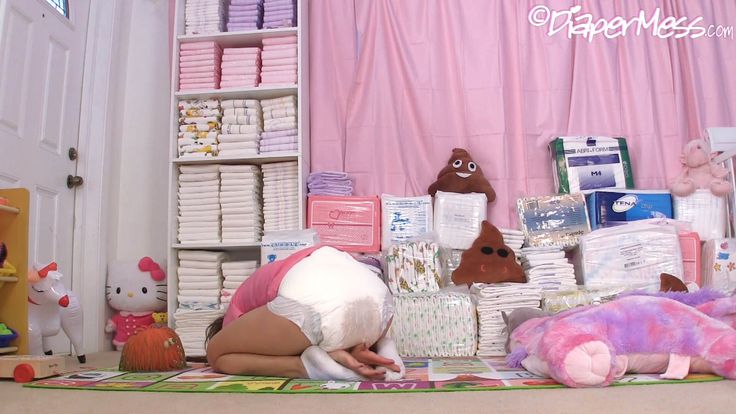 Plus, you can add family, friends, and followers to share photos and videos with! Check it out here.
Plus, you can add family, friends, and followers to share photos and videos with! Check it out here.
Pump Log
If you are a pumping mama, this app is a must-have! This pumping tracker will help you keep track of when you pumped, how long you pumped, and how much you pumped. It also has an awesome feature that will help you keep track of your freezer stash and alert you when you have stored enough to stop pumping.
Pump Log allows you to log the first 50 pump sessions for free and is $14.99 after that. Check it out here!
Lansinoh’s Smart Pump 2.0 Double Electric Breast Pump + App
This new pump connects to your smartphone with Bluetooth and automatically logs the output of your pumping sessions into the Lanisoh Baby App 2.0. Here are some important details about the pump itself: it’s quiet, it has a light-up touch button LCD screen making it easy to use, it has 8 different suction levels, and 3 pumping styles.
When you use this pump you will have access to their app. Since they know pumping is not the only piece of the puzzle they’ve included other tracking functions in their app, like feeding and diapers. It’s all in one place!
Since they know pumping is not the only piece of the puzzle they’ve included other tracking functions in their app, like feeding and diapers. It’s all in one place!
Check out Lansinoh’s Smart Pump 2.0 Double Electric Breast Pump here. If you aren’t set on having a built-in baby feeding and diaper tracker, this pump is also available without the Bluetooth connection for a more budget-friendly price here.
Nara Baby App
The Nara Baby App helps with your baby’s overall routine, which probably mostly includes eating, sleeping, and pooping. This app will work as both a feeding and diaper tracker. They made this app with the idea of making it as easy as possible to track so that you can spend time on the more important stuff, like quality time! What I love most about Nara is that you can share it across multiple devices making it easier for everyone to be on the same page with your baby’s schedule.
Download the app here!
A Couple of Bonus Apps That Make Parenting Easier
The Best 2-for-1 Breastfeeding and Baby Tracker App: Feed BabyAvailable for iPhone and Android, this reader-recommended baby feeding and diaper tracker app allows parents to enter logs for breastfeeding, bottle feeds, sleep, solid foods, diapers, and medications.
For Tracking Doctor’s Appointments & Milestones: Sprout Baby
Not only does this app track the details of your baby’s daily life, but as you add developmental milestones and photos, it generates an adorable little report. The report is in the style of a newspaper (remember those?), and the front page that combines age-appropriate tips with actual facts about your child.
Our Favorite Sleep Tracking Tool: Huckleberry
Want professional sleep advice for your little one right at your fingertips? Huckleberry is an affordable way to get the help you need. SweetSpot, their free sleep help tool, is the best place to start. This tool gives optimal sleep time predictions making naps and bedtimes easier by making sure your baby isn’t under tired or overtired. All you do is log a couple of sleep sessions and you will start getting these alerts.
They also offer affordable personalized guidance by sleep experts! You take a questionnaire, track your little one’s sleep for a couple of days, then both the algorithm and the experts took a look at your data.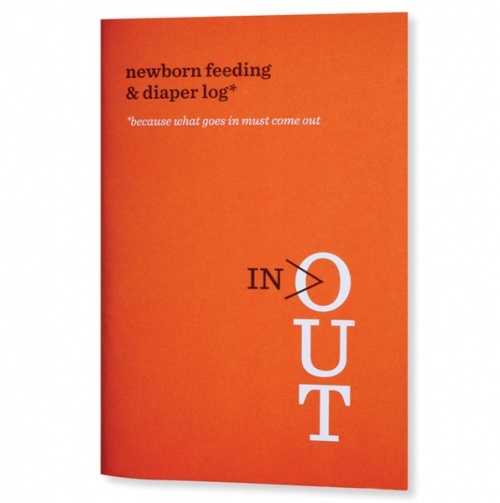 From there, a custom sleep plan is created for you to follow.
From there, a custom sleep plan is created for you to follow.
Huckleberry Premium is truly a great chance to take action without breaking the bank because you receive continued guidance and milestone assessments. I mean, you get expert advice personalized to your family’s needs for less than $20! Trust me, your sleep is worth this small investment.
Sharing Milestones with Ultimate Privacy: Tinybeans
This app provides a way for you to share and store photos and memories with the people you choose. It’s a great option for people who don’t love posting frequently on social media but have family far away with who they want to share all the little things.
The Best App for Connecting All Your People: Sproutly
From pregnancy to parenthood, this app will help you keep everyone in the know about updates with your baby. Rather than spreading your information all across social media, you can just keep the people you want in the loop, in a private and secure platform that is shielded from ads or ad-targeting. It allows you to keep your people updated on the due date, your gift registry information, the latest pictures and important milestones once your baby arrives.
It allows you to keep your people updated on the due date, your gift registry information, the latest pictures and important milestones once your baby arrives.
We especially love this app for people that have extended friends & family across the world. Rather than a personal page, you have a family page allowing you to give updates about each family member and see other family’s updates! Check it out here.
#1 App for Newborns: Baby Tracker Newborn Log
This is another one that does it all, from logging nursing sessions to sleep and diaper changes. Plus, you get to track it all on an app with an elegant interface that’s easy to use. See it in more detail here.
The App for Making Mom Friends: Peanut
If you are looking for ways to connect with other women who are on the same journey, whether it be fertility-related, pregnancy, or parenthood, then you have to check out Peanut! It is a great way to meet women nearby. We all could use a mom friend or two after all!
How I Found Out Tracking is an Important Part of Parenting
Sleep deprivation can make keeping track of time challenging for new parents. When our baby was old enough to start sleeping in regular stretches, we realized we still were unsure of what these patterns were (Because what time was that? Were we up for an hour or was that 10 minutes? It’s all the same).
When our baby was old enough to start sleeping in regular stretches, we realized we still were unsure of what these patterns were (Because what time was that? Were we up for an hour or was that 10 minutes? It’s all the same).
We then realized we needed to find a way to track his sleep and wake times. We went back to our trusty notebook, believing that if we wrote down what was happening, we could make some sense out of it.
For me, the baby’s naps always felt to be just about 20 minutes long. When we started tracking, I realized he was actually napping for much longer. It was helpful to have logged the start time for a reality check. Woman, you’ve been scrolling on Instagram for 90 minutes. Whoops.
Whether you like a notebook, a spreadsheet template (we have a printable baby tracker you can use), or an app on your phone, it’s so important to find a system that works for you! We hope the list above has helped you do just that.
Is there a baby app you couldn’t live without? We would love to hear about it in the comments below!
Frequently Asked Questions
How do you keep track of newborn feedings?
You can track with a pen & paper, in your phone notes, or with an app designed to make tracking easy. You will want to note which breast you fed on, the time of the feeding session, and how many ounces your baby ate.
You will want to note which breast you fed on, the time of the feeding session, and how many ounces your baby ate.
Can both parents use baby tracker?
Many baby tracker apps allow both parents or multiple caregivers to use them. Our top 2 are Talli Baby and Glow Baby.
What is the best baby tracking app?
Ovia Pregnancy Tracker
Pregnancy Tracker and Baby App
Baby Tracker Newborn Log
Hatch Baby (along with the Hatch Baby Changing Pad)
Huckleberry
Pin for Later- Best Baby Feeding and Diaper Tracker Tools and Apps!
Breastfeeding a newborn | What to Expect in the First Week
The first week of a baby's life is a wonderful but hectic time, especially if you haven't breastfed before. Our breastfeeding tips will help you settle in as quickly as possible
Share this information
The first time after childbirth, mothers are often confused. The body is still recovering, and you are already starting to get to know your newborn baby. The emotional state during this period can be unstable, especially between the second and fifth day, when many women have milk 1 and at the same time postpartum depression begins 2 . In addition, people around often expect (and demand) that a woman come to her senses as soon as possible and become a “super mom”. But the best thing to do this first week is just to be with your baby and get breastfeeding going.
The emotional state during this period can be unstable, especially between the second and fifth day, when many women have milk 1 and at the same time postpartum depression begins 2 . In addition, people around often expect (and demand) that a woman come to her senses as soon as possible and become a “super mom”. But the best thing to do this first week is just to be with your baby and get breastfeeding going.
When should I start breastfeeding my newborn?
Try to breastfeed your baby within the first hour after birth. When the baby latch onto the breast and begins sucking rhythmically, it stimulates the mammary gland cells and starts milk production. 1 It is not for nothing that this time is called the “magic hour”!
“Ideally, the baby should be placed on the mother's stomach immediately after birth so that it can immediately attach to the breast. He won't necessarily eat, but he should be able to,” explains Cathy Garbin, an internationally recognized expert on breastfeeding.
“Hold your baby and let him find the breast on his own and put the nipple in his mouth. This is called the breast-seeking reflex. On the Internet you can watch videos that show what this process looks like. If the baby does not latch onto the nipple on its own, the midwife will help to properly attach it to the breast. But for starters, it’s good to give the baby the opportunity to do it on their own. In this case, the optimal position for the mother is reclining. ”
Don't spend that special first hour of your baby's life weighing and swaddling—or at least wait until he's suckling for the first time. Enjoy hugs and close skin-to-skin contact. This promotes the production of oxytocin, the hormone of love, in you and your baby, and oxytocin plays a key role in the supply of the first breast milk - colostrum. 3
“As soon as the obstetricians were convinced that our son was healthy, the three of us — me, my husband and our baby — were left to give us the opportunity to get to know each other. It was a very special hour - an hour of awkwardness, turbulent emotions and bliss. During this time, I breastfed my son twice, ”recalls Ellie, a mother of two from the UK.
It was a very special hour - an hour of awkwardness, turbulent emotions and bliss. During this time, I breastfed my son twice, ”recalls Ellie, a mother of two from the UK.
Did you know that breastfeeding helps to recover after childbirth? This is because oxytocin stimulates uterine contractions. In the first hours after childbirth, this contributes to the natural release of the placenta and reduces blood loss. 4
What if the birth did not go according to plan?
If you had a cesarean section or other complications during childbirth,
You can still make skin-to-skin contact with your baby and breastfeed him in the first hours after birth.
“If you can't hold your baby, have your partner do it for you and make skin-to-skin contact with the baby. This will give the baby a sense of security, care and warmth so that he can hold on until you recover, ”Katie advises.
If the baby is unable to breastfeed, it is advisable to start expressing milk as early as possible and do so as often as possible until the baby is able to feed on its own. “While breastfeeding in the first hours after birth lays an excellent foundation for the future, it is not so important,” Cathy reassures. “It is much more important to start lactation so that in the future, if necessary, you can start breastfeeding.”
“While breastfeeding in the first hours after birth lays an excellent foundation for the future, it is not so important,” Cathy reassures. “It is much more important to start lactation so that in the future, if necessary, you can start breastfeeding.”
To start milk production, you can express milk manually or use a breast pump that can be given to you at the hospital. 5 And with expressed precious colostrum, it will be possible to feed the child. This is especially important if the baby was born premature or weak, since breast milk is extremely healthy.
If a baby was born prematurely or has a medical condition and cannot be breastfed immediately, this is no reason not to continue breastfeeding. “I have worked with many new mothers who were unable to breastfeed their baby for the first six weeks due to preterm labor or other reasons. Nevertheless, all of them later successfully switched to breastfeeding,” says Kathy.
Does the baby latch on correctly?
Correct breastfeeding is essential for successful breastfeeding 6 , as it determines how effectively the baby will suckle milk and hence grow and develop.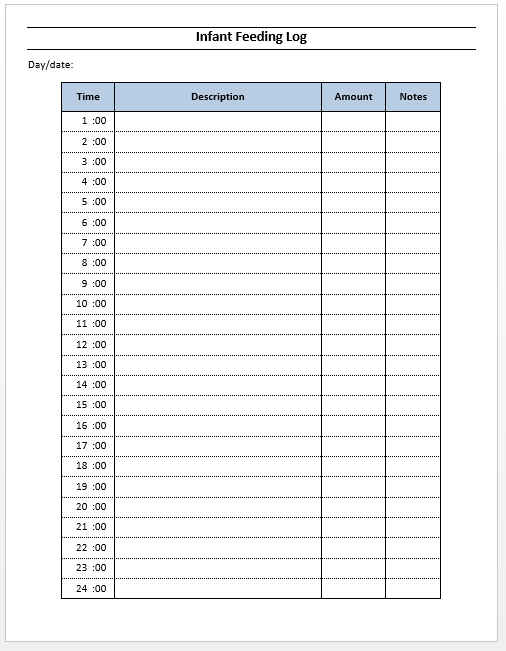 Latching on the breast incorrectly can cause sore or damaged nipples, so don't hesitate to ask your doctor to check that your baby is properly attached to the breast, even if you are told that everything is fine and you do not see obvious problems - especially while you are in the hospital.
Latching on the breast incorrectly can cause sore or damaged nipples, so don't hesitate to ask your doctor to check that your baby is properly attached to the breast, even if you are told that everything is fine and you do not see obvious problems - especially while you are in the hospital.
“While I was in the hospital, I called the doctor at every feed and asked me to check if I was breastfeeding correctly,” says Emma, mother of two from Australia. - There were several cases when it seemed to me that everything seemed to be right, but it was painful to feed, and the doctor helped me take the baby off the breast and attach it correctly. By the time I was discharged, I had already learned to do it confidently.”
When applying to the breast, point the nipple towards the palate. This will allow the baby to take the nipple and part of the areola under it into their mouth. It will be easier for him to suck if he has both the nipple and part of the areola around in his mouth.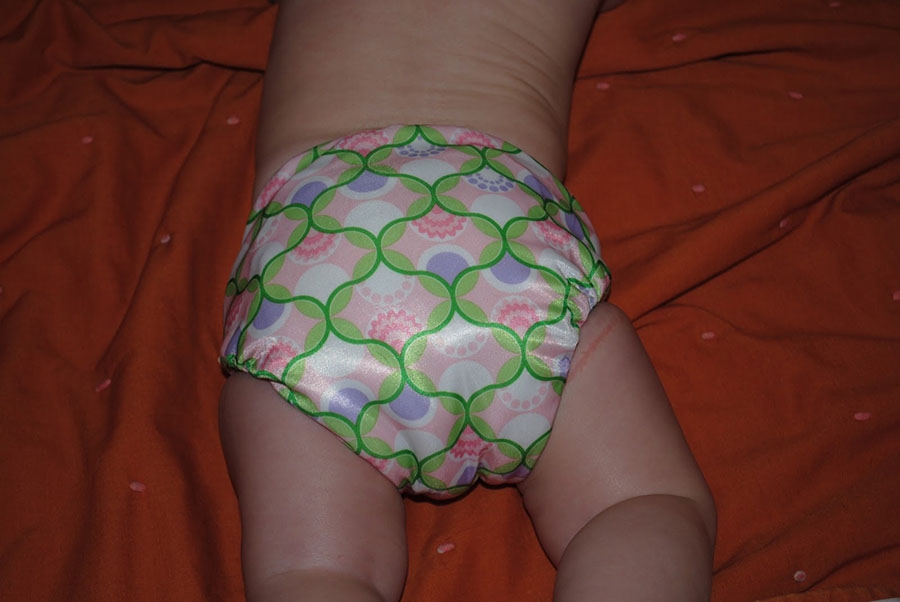 6
6
“When a baby latch on properly, it doesn't cause discomfort and it causes a pulling sensation, not pain,” Cathy explains. - The baby's mouth is wide open, the lower lip may be slightly turned outward, and the upper one lies comfortably on the chest. The body language of the child indicates that he is comfortable. There isn't much milk at this early stage, so you probably won't notice your baby swallowing, but he will suckle a lot and nurse frequently."
How often should a newborn be fed?
The frequency and duration of breastfeeding in the first week can vary greatly. “The first 24 hours of life are completely different for different children. Someone sleeps a lot (after all, childbirth is tiring!), And someone often eats, says Katie. - Such a variety greatly confuses young mothers. Everyone gives different advice, so it's important to remember that every mother and child is different."
“Colostrum is thicker than mature breast milk and is produced in smaller amounts, but has many benefits. When the baby eats colostrum, he learns to suck, swallow and breathe until milk begins to flow in more volume, ”explains Cathy.
When the baby eats colostrum, he learns to suck, swallow and breathe until milk begins to flow in more volume, ”explains Cathy.
Milk usually arrives on the second or fourth day after birth. Until this time, the baby is applied to the breast 8-12 times a day (and sometimes more often!), including at night. 7 Feeding may last 10-15 minutes at this stage, or 45 minutes or even an hour, as the baby is just beginning to develop the muscles and coordination needed to suckle effectively.
“At first, the intensity of feeding is very high, often higher than many people realize, and this is shocking to most new mothers,” says Cathy. - Sometimes mom has no time to go to the toilet, take a shower and have a snack. It usually comes as a surprise."
Camille, a mother from Australia, experienced this. “The first week, Frankie ate every two hours, day and night, and each time it took half an hour to an hour to feed,” she recalls. “My husband and I were completely exhausted!”
Do I need to feed my newborn on a schedule?
The good news is that frequent feeding promotes lactation and stimulates milk production.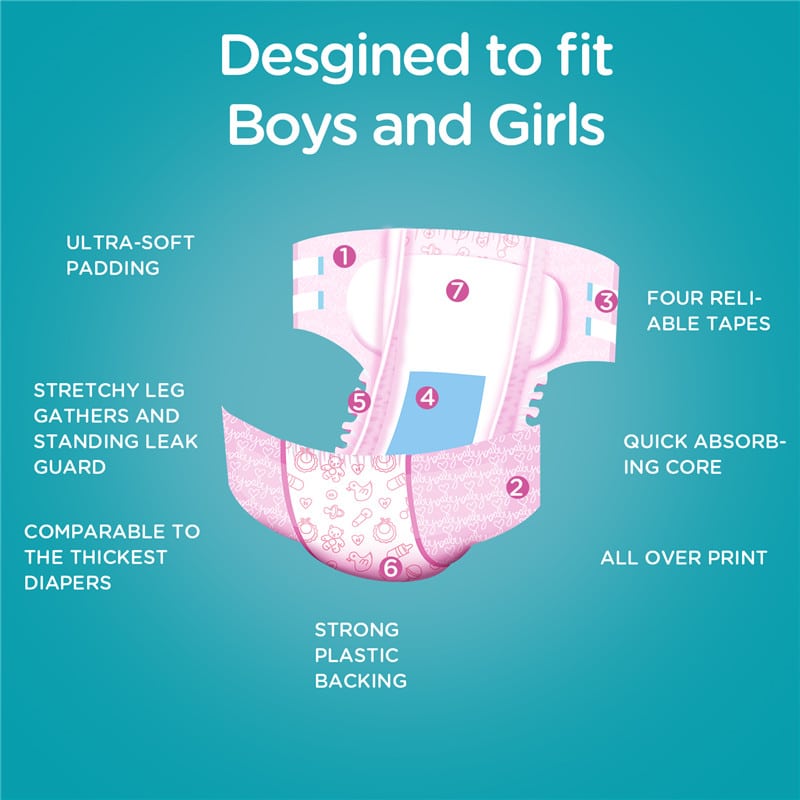 7 The more your baby eats, the more milk you will have. Therefore, forget about feeding your newborn on a schedule - this way he will have less chance of feeding. Try to feed your baby when he signals that he is hungry 8 :
7 The more your baby eats, the more milk you will have. Therefore, forget about feeding your newborn on a schedule - this way he will have less chance of feeding. Try to feed your baby when he signals that he is hungry 8 :
- tossing and turning in her sleep;
- opens eyes;
- turns his head if he feels a touch on his cheek;
- sticks out tongue;
- groans;
- licks lips;
- sucks fingers;
- is naughty;
- whimpers;
- is crying.
Crying is the last sign of hunger, so when in doubt, just offer your baby the breast. If he bursts into tears, it will be more difficult to feed him, especially at first, when both of you are just learning how to do it. As your baby grows, he will likely eat less frequently and take less time to feed, so breastfeeding will seem more predictable.
Does breastfeeding hurt?
You may have heard that breastfeeding is not painful at all, but in fact, in the first days, many new mothers experience discomfort. And this is not at all surprising, given that the nipples are not used to such frequent and strong sucking.
And this is not at all surprising, given that the nipples are not used to such frequent and strong sucking.
“Breastfeeding can be uncomfortable for the first couple of days – your body and your baby are just getting used to it. If a baby eats for too long and does not latch well, the sensations are almost the same as from unworn new shoes, Cathy compares. Just as tight shoes can rub your feet, improper suckling can damage your nipples. Prevention is always better than cure, so if the pain persists after a few days of feeding, contact a lactation consultant or healthcare professional.”
Maria, a mother from Canada, agrees: “Although my son seemed to latch onto the breast well, he damaged his nipples while feeding, and I was in pain. As it turned out, the reason was a shortened frenulum of the tongue. The breastfeeding specialists at our city clinic have been of great help in diagnosis and treatment.”
In addition, you may experience period cramps during the first few days after breastfeeding, especially if this is not your first baby.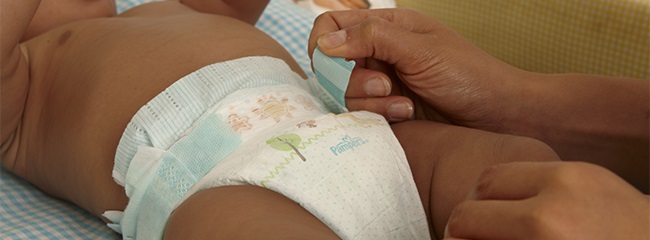 This is the so-called postpartum pain. The fact is that oxytocin, which is released during breastfeeding, contributes to further contraction of the uterus to restore its normal size. 4
This is the so-called postpartum pain. The fact is that oxytocin, which is released during breastfeeding, contributes to further contraction of the uterus to restore its normal size. 4
When milk arrives, the breasts usually become fuller, firmer and larger than before delivery. In some women, the breasts swell, harden and become very sensitive - swelling of the mammary glands occurs. 10 Frequent breastfeeding relieves these symptoms. For more breast care tips, read our article What is Breast Swelling?
How often does the newborn urinate and defecate?
What goes into the body must go back out. Colostrum
has a laxative effect, helping to eliminate meconium - the original feces. It looks a little scary - black and sticky, like tar. 11 But don't worry, it won't always be like this. Breastfed babies usually have a slightly sweet smell of stool.
How many times a day you will need to change diapers and how the contents should look like, see below.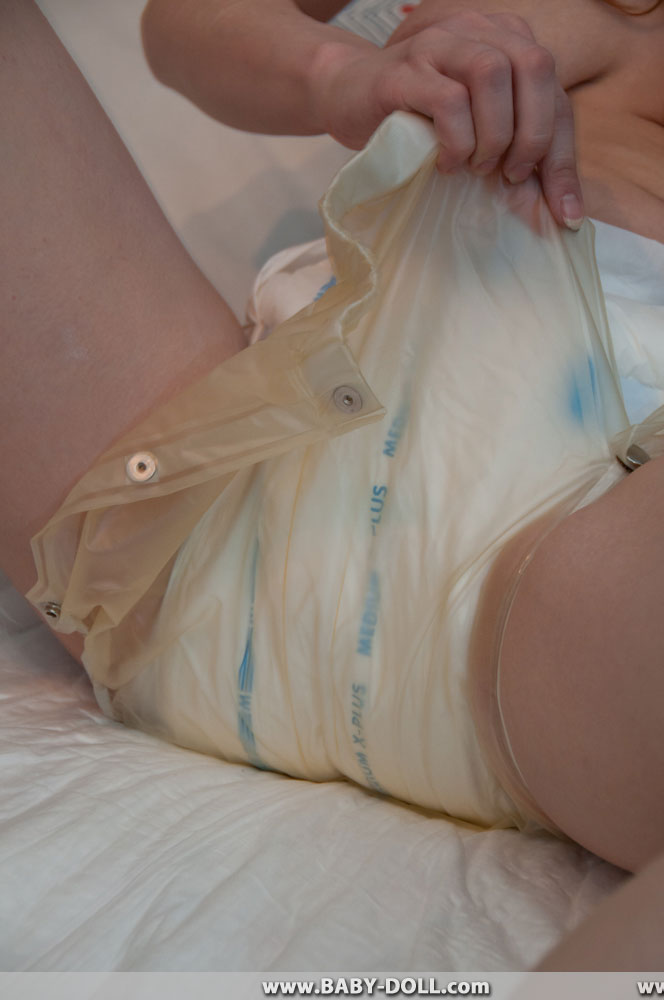
Day one
- Frequency: once or more.
- Colour: greenish black.
- Texture: sticky like tar.
Day two
- Frequency: twice or more.
- Colour: dark greenish brown.
- Texture: less sticky.
Day three
- Frequency: twice or more.
- Colour: greenish brown to brownish yellow.
- Texture: non-sticky.
Fourth day and then the entire first month
- Frequency: twice or more.
- Color: yellow (feces should turn yellow no later than by the end of the fourth day).
- Texture: grainy (like mustard with grains interspersed). Leaky and watery.
The baby's urine should be light yellow. On average, babies urinate once a day for the first two days. Starting around the third day, the number of wet diapers increases to three, and from the fifth day onwards, diapers have to be changed five times a day or more often. In addition, during the first few days, the weight of wet diapers increases. 11
In addition, during the first few days, the weight of wet diapers increases. 11
Is the baby getting enough breast milk?
Since very little milk is produced at first,
You may feel that this is not enough for your baby. But if you feed your baby on demand, you will produce exactly as much milk as he needs. If you want to keep the process under control, be guided by the frequency of diaper changes above. If your baby soils less diapers, check with your doctor.
“For the first three or four weeks, most babies just eat and sleep. If the child is worried and constantly asks for a breast, you should consult with your doctor, ”Katie recommends.
Sometimes the baby may vomit after feeding. If the vomit is the color of milk, this is not a cause for concern. But if there are orange, red, green, brown or black blotches in it, or the child vomits with a "fountain", consult a doctor. You should also consult a doctor if the baby has a high temperature, the fontanel (soft spot on the head) has sunk, blood is found in the stool, and also if the weight recorded at birth has not recovered within two weeks.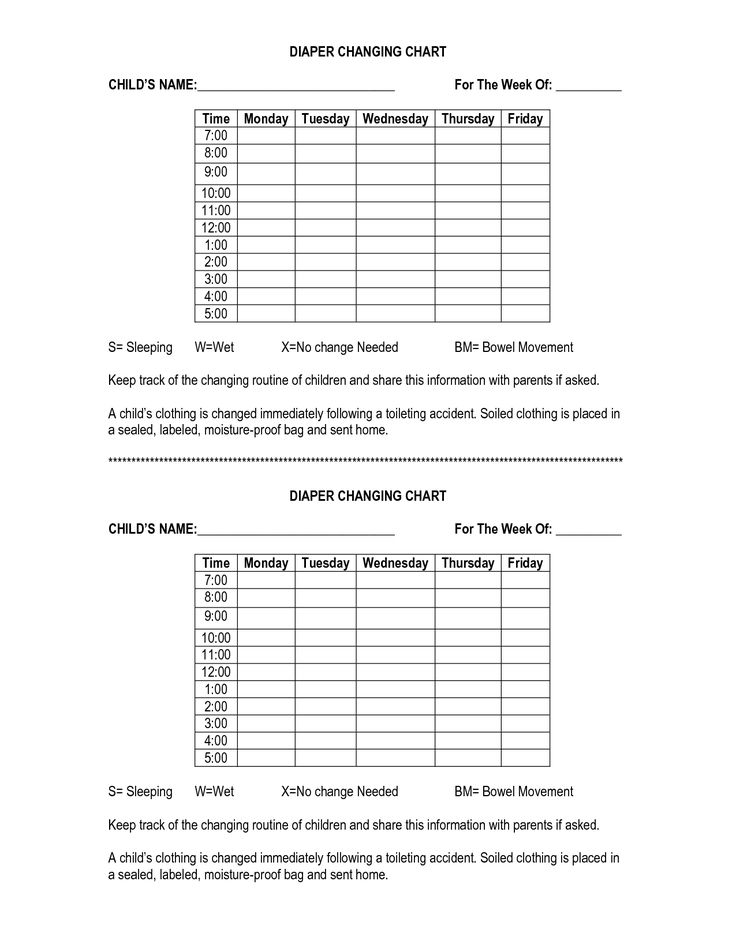 11
11
But if there are no frightening symptoms and the baby is growing at a normal pace, it means that he has enough milk. Soon you will both get used to breastfeeding and establish a more stable routine.
For the next step in breastfeeding, see Breastfeeding in the First Month: What to Expect.
Literature
1 Pang WW, Hartmann PE. Initiation of human lactation: secretory differentiation and secretory activation. J Mammary Gland Biol Neoplasia 2007;12(4):211-221. - Pang, W.W., Hartmann, P.I., "Lactation initiation in the lactating mother: secretory differentiation and secretory activation." G Mammary Gland Biol Neoplasia. 2007;12(4):211-221.
2 Shashi R et al. Postpartum psychiatric disorders: Early diagnosis and management. Indian J Psychiatry .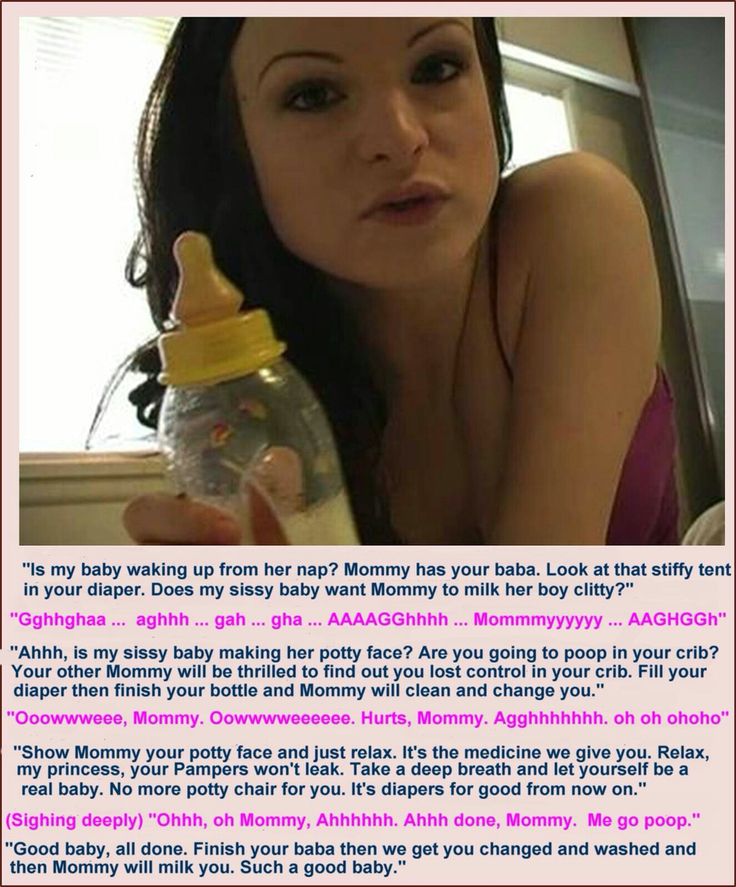 2015; 57( Suppl 2): S 216– S 221. - Shashi R. et al., Postnatal mental disorders: early diagnosis and treatment. Indian J Saikiatri. 2015; 57(App 2):S216-S221.
2015; 57( Suppl 2): S 216– S 221. - Shashi R. et al., Postnatal mental disorders: early diagnosis and treatment. Indian J Saikiatri. 2015; 57(App 2):S216-S221.
3 Moberg KU, Prime DK. Oxytocin effects in mothers and infants during breastfeeding. Infant . 2013;9(6):201-206. - Moberg K, Prime DK, "The effects of oxytocin on mother and child during breastfeeding." Infant. 2013;9(6):201-206.
4 Sobhy SI, Mohame NA. The effect of early initiation of breast feeding on the amount of vaginal blood loss during the fourth stage of labor. J Egypt Public Health Assoc . 2004;79(1-2):1-12. - Sobhi SI, Moham NA, "Early initiation of breastfeeding and its effect on vaginal bleeding in the fourth stage of labor." G Egypt Public Health Assoc. 2004;79(1-2):1-2.
2004;79(1-2):1-2.
5 Meier PP et al. Which breast pump for which mother: an evidence-based approach to individualizing breast pump technology. J Perinatol . 2016;36(7):493. - Meyer P.P. et al., Breastpump Selection: A Scientific Approach to Customizing Pumping Technology. J Perinatol (Journal of Perinatology). 2016;36(7):493-499.
6 Cadwell K. Latching - On and Suckling of the Healthy Term Neonate: Breastfeeding Assessment. J Midwifery & Women ’ s 2007;52(6):638-642. — Cadwell, K., "Latching and sucking in healthy newborns: evaluation of breastfeeding." W Midwifery Women Health. 2007;52(6):638-642.
7 Kent JC et al. Principles for maintaining or increasing breast milk production. 2012;41(1):114-121. - Kent J.S. et al. , "Principles for Maintaining and Increasing Milk Production". J Obstet Ginecol Neoneutal Nurs. 2012;41(1):114-121.
, "Principles for Maintaining and Increasing Milk Production". J Obstet Ginecol Neoneutal Nurs. 2012;41(1):114-121.
8 Australian Breastfeeding Association [ Internet ]. Feeding cues ; 2017 Sep [ cited 2018 Feb ]. - Australian Breastfeeding Association [Internet], Feed Ready Signals; September 2017 [cited February 2018]
9 Jacobs A et al. S3-guidelines for the treatment of inflammatory breast disease during the lactation period. Geburtshilfe Frauenheilkd . 2013;73(12):1202-1208. - Jacobs A. et al., "Guidelines S -3 for the management of inflammatory breast disease during breastfeeding." Geburtskhilfe und Frauenheilkünde. 2013;73(12):1202-1208.
10 Lawrence RA, Lawrence RM. Breastfeeding: A guide for the medical profession. 7th ed. Maryland Heights MO, USA: Elsevier Mosby; 2010. 1128 p . - Lawrence R.A., Lawrence R.M., "Breastfeeding: A guide for healthcare professionals." Seventh edition. Publisher Maryland Heights , Missouri, USA: Elsevier Mosby; 2010. P. 1128.
Breastfeeding: A guide for the medical profession. 7th ed. Maryland Heights MO, USA: Elsevier Mosby; 2010. 1128 p . - Lawrence R.A., Lawrence R.M., "Breastfeeding: A guide for healthcare professionals." Seventh edition. Publisher Maryland Heights , Missouri, USA: Elsevier Mosby; 2010. P. 1128.
how to distinguish it from gaziki, symptoms, what to do and how to help when intestinal colic begins during breastfeeding
From the age of four weeks my son began to cry almost every evening at the same time. Yes, so bitter that I wanted to cry with him.
Ksenia Petrova
doctor, mother, survivor of colic
Author profile
No matter what my husband and I did at that time, he would not calm down. After about an hour, the crying stopped, and the son was again the calmest child in the world. We thought that we were doing something wrong: I needed to change either my diet or my daily routine. But the pediatrician explained that it was colic, and everything would go away on its own.
But the pediatrician explained that it was colic, and everything would go away on its own.
Intestinal colic is diagnosed in 30% of children in the first four months of life. To save a child from suffering, parents are ready to give any money. And this is often used by charlatans, manufacturers of biological supplements and infant formula.
What is intestinal colic in newborns
Intestinal colic is cramping pain in the abdomen. During an attack, the baby behaves restlessly and cries. At the same time, the rest of the time he is calm and looks healthy.
The term "colic" was introduced by the American pediatrician Morris Wessel. He noticed that some healthy children cried more than others. The pediatrician decided to call this phenomenon colic. There was no talk of any illness.
How long does colic last in newborns
In total, colic lasts up to three hours a day. Some parents think that the baby is crying all the time. Therefore, pediatricians recommend keeping a diary with the time of each episode of crying.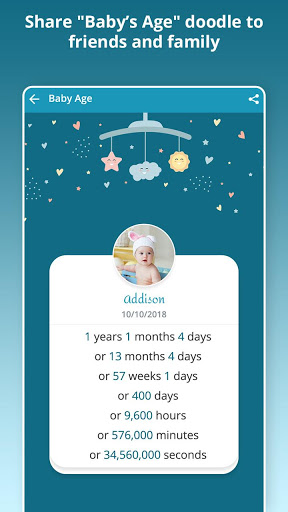 In it, mark the beginning, end of crying and the reason. At the end of the day, count how much the child cried in total and separately - how much he cried for an unknown reason.
In it, mark the beginning, end of crying and the reason. At the end of the day, count how much the child cried in total and separately - how much he cried for an unknown reason.
Baby crying diary
| Beginning and end of crying | Total, minutes | Reason |
|---|---|---|
| 05:33 — 05:46 | 13 | Dirty diaper |
| 08:14 - 08:57 | 43 | Fright |
| 11:00 - 11:22 | 22 | Hunger |
| 15:13 - 15:20 | 7 | Dirty diaper |
| 16:49 - 17:15 | 26 | Cause unknown |
| 19:38 - 21:02 | 24 | Other known cause |
| 23:00 - 23:20 | 20 | Hunger |
| Total | 155 minutes | |
| Crying for unknown reason | 26 minutes |
05:33 - 05:46
only
13 minutes
Reason
Dirty diaper
08:14 - 08:57:57:57
only
9000 43 minutes003
Fight
11:00 - 11:22
Total
22 minutes
Reason
Hunger
15:13 - 15:20 Dirty diapers
16:49 - 17:15
Total
26 minutes
Reason
The reason is unknown
19:38 - 21:02
24 minutes
C reason0003
other well -known reason
23:00 - 23:20
Total
20 minutes
Reason
Hunger
155 minutes
Crying for an unknown reason
9000 26 minutes Diary will help the diary will help the diary will help calculate how many minutes a day crying lasts and what is its reason. Download a copy of this plate and fill it out online or in print form.
Download a copy of this plate and fill it out online or in print form.
When does colic start in newborns
After a natural birth, colic in babies can begin as early as three weeks. They occur during feeding or 20-30 minutes after it. With a caesarean section, colic may begin a week earlier. Pediatricians suggest that this is due to a lack of microorganisms in the child's gastrointestinal tract. During natural childbirth, they enter the baby's body from the mother's birth canal, but this does not happen during caesarean section.
Gut microbiota development and health implications - PubMed
Causes of colic
The exact cause of infantile colic has not been established.
The causes of colic in formula-fed and breast-fed children are the same. They do not depend on gender and skin color, whether the child is full-term or not. And they are found not only in children, but also in the cubs of other mammals. Puppies, for example, can take a pose with an arched back and tucked paws and whine, even if their mother is nearby.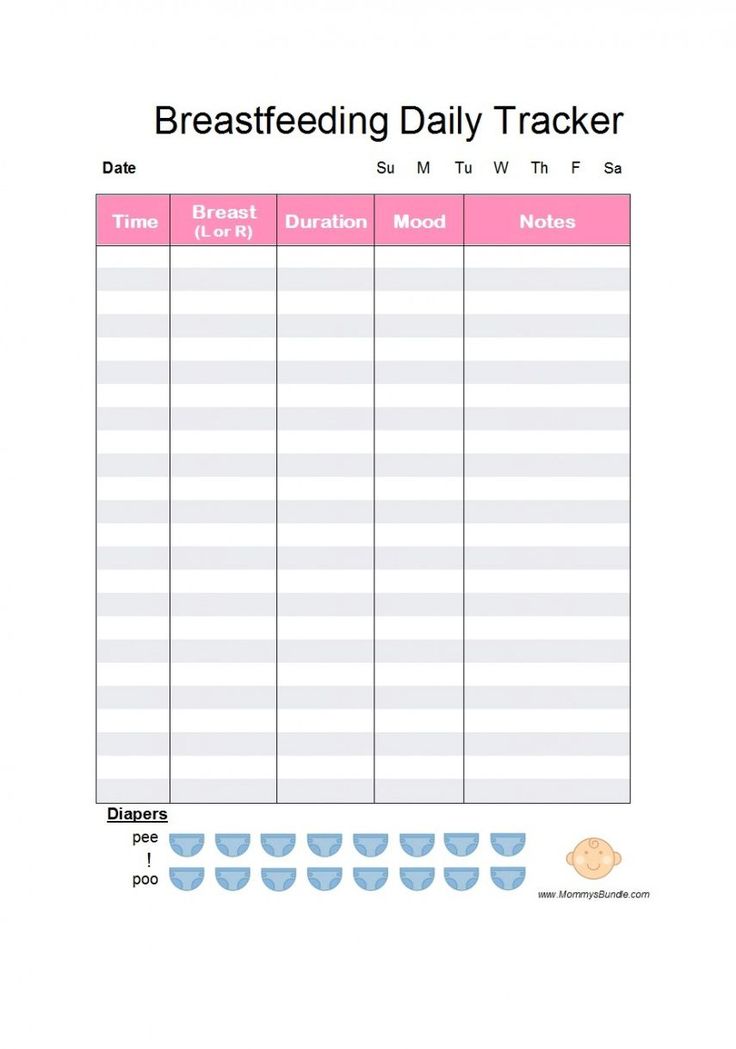
Which children are more likely to have colic, article in UpToDate
Natural dog health remedies: symptoms of colic in puppies
Scientists suggest that colic occurs for several reasons.
Immaturity of the nervous system. Up to three months, nerve impulses may arrive at the digestive system chaotically. As a result, the muscles in the walls of the stomach and intestines sometimes contract incorrectly. It's like pedaling a bicycle with one foot forward and the other back. Due to the disconnected work of the intestine, painful spasms occur.
Development of the digestive system, article in Pubmed
From three to five months, the supply of nerve impulses improves, the muscles begin to work synchronously, and spasms become less.
Lack of enzymes. Food cannot be digested without special proteins - enzymes. They break down food into simpler constituents. In the first months of life, the salivary glands, stomach, pancreas and small intestine produce few enzymes. Therefore, their number is not always enough to digest food. Poorly digested food enters the large intestine, where it is processed by bacteria. The fermentation process begins. Gas is formed, and the more, the more it presses on the intestines from the inside. Gas formation leads to discomfort and pain. When gases leave, the child becomes easier.
Therefore, their number is not always enough to digest food. Poorly digested food enters the large intestine, where it is processed by bacteria. The fermentation process begins. Gas is formed, and the more, the more it presses on the intestines from the inside. Gas formation leads to discomfort and pain. When gases leave, the child becomes easier.
Parental alarm. Scientists have noticed that children of anxious parents were more likely to be diagnosed with intestinal colic.
Maternal Anxiety Disorders and Baby Crying, Pubmed article
Children are empaths, reflecting the inner state of others, even if they try to hide it. For example, if the mother is often sad, the child will become anxious. Older children are able to express feelings in different ways, and babies, experiencing negative emotions, cry.
At the same time, the frequency of colic is in no way connected with parental experience. The fifth child in the family may have colic, even if the previous four children did not have them, and the parents are sure that they know all the secrets to preventing colic.
Migraine. Infantile colic is considered as a reaction to pain. The source of pain can be not only the stomach, but also the head. In 2013, it was found that children who were diagnosed with migraine were more likely to suffer from colic in infancy. And in 2014, researchers concluded that colic may be an early manifestation of migraine. There is also a suggestion of a feedback loop: children who have had colic are more likely to have migraines in the future.
Relationship between childhood migraine and colic, article in Jama
Maternal smoking and nicotine replacement therapy. A large study confirmed the relationship between maternal smoking and colic in children. We are talking about both the mother's smoking during pregnancy and the inhalation of tobacco smoke by the child. Nicotine interferes with the passage of nerve impulses to the intestines, causes inflammation of its mucosa and reduces blood flow to the gastrointestinal tract.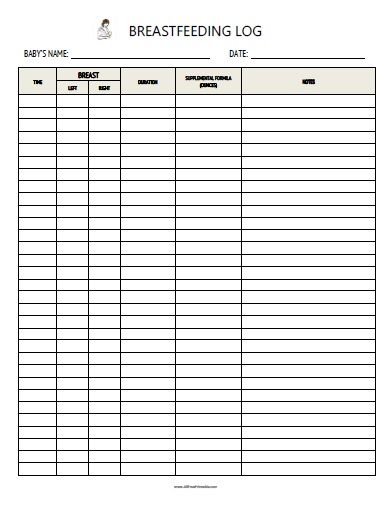 As a result, colic occurs.
As a result, colic occurs.
Pediatrics: how maternal smoking increases the risk of infantile colic
Allergy to cow's milk proteins. Cow's milk protein can enter the child's body directly from artificial mixtures or through breast milk from the mother. In the blood, the protein reacts with antibodies. As a result of this reaction, substances are formed that can damage intestinal cells. Inflammation begins in it, which becomes a source of pain. In a European study, 12,050 children with colic were examined for allergies to cow's milk protein. Among them were children on artificial and natural feeding. Allergy was confirmed in 1% of children.
Another study found that only 1.7% of mothers get enough cow's milk protein into their breast milk to cause an allergy. This means that even if the child has an allergy, in most cases the mother can continue to drink cow's milk.
Cow's milk protein allergy is easily missed or confused with another disease.![]() Most often, with an allergy in a child, blood appears in the stool, visible to the naked eye. Less common symptoms:
Most often, with an allergy in a child, blood appears in the stool, visible to the naked eye. Less common symptoms:
- Excessive colic: attacks of intense, inconsolable and prolonged crying.
- Delayed weight gain.
- Mid-feeding cry with early sucking stop and malnutrition.
- Skin rash: if it develops, take the child to the pediatrician.
Diagnosis and treatment of protein allergy in children, a practical guidePDF, 383 KB
Does mom's diet affect colic. To confirm the diagnosis, the doctor may prescribe a cow's milk-free diet to the mother, a blood test for antibodies and a fecal occult blood test to the child.
Changing the diet for colic - Cochrane
How to tell if a baby has colic
Colic appears to be part of normal baby development. Outside the attack, the baby looks healthy and happy. Therefore, the following symptoms appear only during colic.
How to tell if a child has colic:
- Crying starts suddenly, more often in the evening.

- The face turns red and the skin around the lips turns pale.
- Belly swollen and tense.
- The child's legs are bent and brought to the stomach, and during especially strong crying they can be tense and straightened, cold to the touch.
- Fingers clenched, arms extended and tense.
- Back arched.
American pediatrician and scientist Ronald Barr about six characteristics of crying during colic in children and how parents can survive this and not harm the child
Relief can come after the child poops. At the same time, gases are released and spasms associated with improper coordination of the intestines stop. Sometimes colic can end just after the baby has farted.
What colic looks like in a newborn: the baby is screaming, the lips and skin around the mouth are pale, the hands are clenched into fists, the legs are brought to the stomach. Source: Luck Club Colic can occur in the form of contractions: the child cries, then calms down for a few minutes and starts screaming again.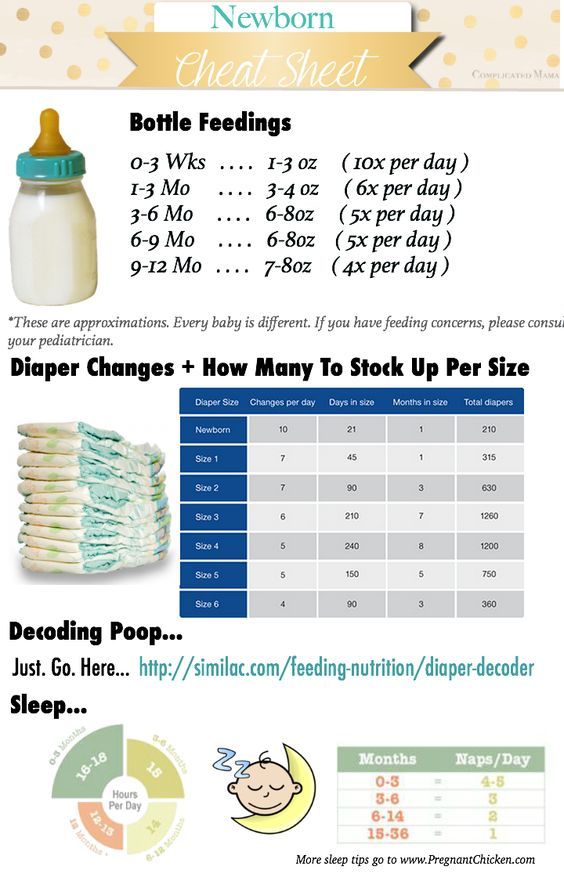 And so in a circle.
And so in a circle.
Less than 5% of children have colic due to illness. Then other alarming symptoms appear in the child:
- The temperature is above 38 °C.
- Diarrhea more than 8-10 times a day.
- The child has not pooped for three days or more.
- Blood in stool: streaks of blood, red or crimson jelly-like impurities, black loose stools.
- Increased regurgitation and vomiting.
- Breathing rate less than 40 breaths per minute, wheezing and whistling may be heard on inspiration, blueness around the mouth.
- Any rash on the skin.
- The child is less active than usual, eats less.
- No matter what you do, you cannot calm your child for more than three hours.
How to distinguish colic from gas in newborns. To understand that discomfort can be associated with gases, you can see the swollen and tense belly of the baby.
Excessive flatulence may be associated with colic: for example, relief in a child may occur after the child poops. At the same time, gases are released and spasms associated with improper coordination of the intestines stop. Sometimes colic can end just after the baby has farted. Therefore, to help a child with colic, gas tubes are sometimes used.
At the same time, gases are released and spasms associated with improper coordination of the intestines stop. Sometimes colic can end just after the baby has farted. Therefore, to help a child with colic, gas tubes are sometimes used.
First aid for a child with colic
You can try one of the ways to calm the child for a few minutes. If there is no effect, go to the next one:
- Offer him a pacifier.
- Turn over onto your tummy.
- Ride in a stroller or car.
- Carry your baby in your arms, in a sling or equivalent.
- Rock while standing, in a rocking chair, sitting on a fitball.
- Change location, shade the room.
- Swing on the baby swing.
- Take a warm bath.
- Stroke your tummy.
- Turn on heartbeat audio.
- Turn on white noise.
- Sing a lullaby or talk to your baby.
- Swaddle loosely.
How to deal with colic, an article in KidsHealth
Pathways. org: how to properly lay the baby on the tummy and how it is useful
org: how to properly lay the baby on the tummy and how it is useful
If all else fails, you can put a gas tube on the child. You can buy it in a pharmacy, specify what it is for a baby. It is worth using this method when other methods do not work, and the child's stomach is still swollen and tense.
Lubricate the tip of the gas tube or enema with petroleum jelly or other oil and gently insert it in a circular motion to a depth of three centimeters. You will hear when the gases begin to come out. At the same time, the child may begin to poop. Soon after a bowel movement, the baby will calm down.
/ya-rodilsya/
From sterilizer to infant carrier: baby shopping list
In the end, you will find a method that is right for your baby.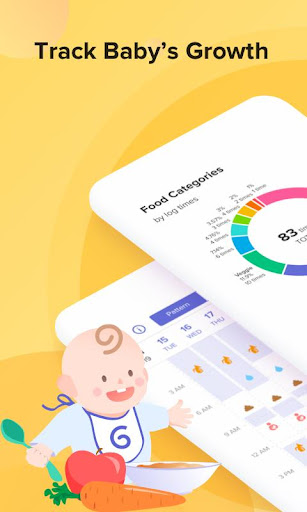 But be prepared that it will not always work.
But be prepared that it will not always work.
How it was with us
My son's colic began from the fourth week and was almost every day, always in the evenings, at the same time. At first, it helped well to rock in a chair to a movie. Worked for a week. On New Year's Eve, the garlands on the Christmas tree came in well, for another week.
There was a period when nothing helped. My husband and I took turns waiting out this time in the evenings with the baby in our arms. The sling helped from time to time. Then I randomly found one song - Alexey Kosenko, Rain with Me Original Mix - where the piano played and there were sounds of rain. I turned it on on repeat and rocked the child while standing in this rhythm. It helped for two whole weeks. The song still plays in my head sometimes.
If the baby won't stop crying:
- Call a loved one who can support you or babysit. At this time, you can rest. Children are great at reading emotions - if you rest and calm down, then the child may stop crying.
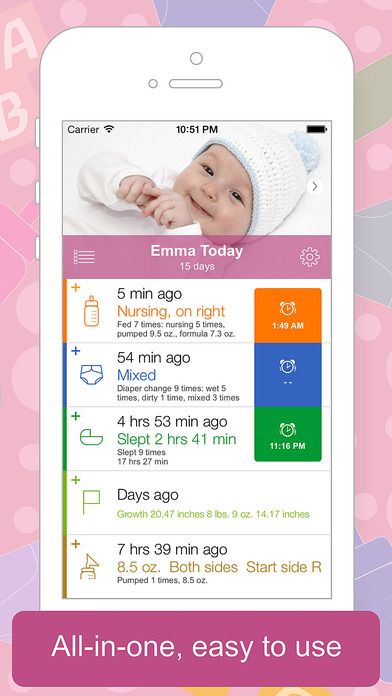
- If all else fails, put the baby on their back in a crib without blankets or soft toys, go out and close the door. For 10 minutes, do something that will help you relax and calm down. For example, take a shower, have a snack, read or listen to music. After that, return to the baby and try to calm him down again.
Do not shake the baby during colic. In children under two years of age, the neck muscles are not sufficiently developed, the walls of the vessels of the brain are fragile, and the head is disproportionately large in relation to the body. Therefore, when shaking, the brain moves inside the skull, which can lead to injury. This is how shaken baby syndrome occurs.
The Period of PURPLE Crying: how shaken baby syndrome develops and causes
Don't blame yourself or your child for crying. Find a way for yourself to relax and know that the child will outgrow this period.
How to help a newborn with colic
There are few high-quality studies on the treatment of colic.![]() Those that exist say that most methods are no more effective than placebos. As a criterion for the effectiveness of the method, scientists usually take the time by which the crying of the child is reduced. It is believed that if a treatment reduces crying time by less than 30 minutes a day, then it is ineffective.
Those that exist say that most methods are no more effective than placebos. As a criterion for the effectiveness of the method, scientists usually take the time by which the crying of the child is reduced. It is believed that if a treatment reduces crying time by less than 30 minutes a day, then it is ineffective.
Nutrition correction. The method helps children who have colic due to allergies. In this case, the doctor excludes allergen foods from the mother's diet. A bottle-fed baby can be transferred to a deep hydrolyzate. The body of a child with an allergy to cow's milk protein cannot break down this protein. Therefore, in hydrolyzed mixtures, milk protein is already split. Such an experiment lasts a week, if there is no effect, the previous diet returns. The effectiveness of the diet for treating infantile colic in a situation where the child does not have allergies has not been proven.
Such an experiment lasts a week, if there is no effect, the previous diet returns. The effectiveness of the diet for treating infantile colic in a situation where the child does not have allergies has not been proven.
Probiotics for breastfed babies. These are live microorganisms that alter the intestinal microflora and aid in digestion. There is speculation, as yet without conclusive evidence, that the gut microflora of infants with colic is different from that of children without colic. Therefore, it is believed that microorganisms can improve digestion, reduce gas and reduce pain.
What to do? 07/02/20
The doctor prescribed dietary supplement along with the usual medicine. This is fine?
But it's not that simple:
- It is not known how many of which microbes each person should have.
- Research is carried out with different types of microorganisms. Each type can have its own effect.
 Therefore, the results cannot be generalized to all probiotics.
Therefore, the results cannot be generalized to all probiotics. - There are few data on the safety of probiotics. Only 2% of studies state that the product is safe.
- Many probiotic studies are sponsored by infant formula manufacturers and drug companies. This raises doubts about the objectivity of the results obtained.
In 2017, a probiotic containing Lactobacillus Reuteri strain DSM 17938 was proven to be effective and safe. In breastfed babies, it reduces the duration of crying by an average of 50 minutes per day. By other criteria, this probiotic is no more effective than a placebo. Therefore, you can use the drug only as directed by a doctor. The probiotic is prescribed for a month to evaluate the effectiveness. With a positive effect, the doctor can extend its intake for another three months.
800 R
average price for BioGaia and Rela Life probiotics containing Lactobacillus Reuteri. You will need at least two bottles per month
Research on the effectiveness of the probiotic with Lactobacillus Reuteri in artificially fed children is just beginning.
Hydrolyzed formulas for formula-fed babies. Studies show that hydrolyzed protein formulas reduce the duration of crying throughout the day. They switch to a new mixture gradually: it is added to the usual one within four days. This is continued until only a hydrolyzed mixture is obtained.
If the new formula helps relieve symptoms of colic, continue taking it for up to three to six months. After that, you can resume taking the usual mixture. This method can reduce crying by 37 minutes a day. But it can only be used as directed by a doctor. Incorrect selection of a new mixture can increase colic or cause allergies.
Baby colic: how to recognize and treat, article on the American Academy of Family Physicians website
Dealing with parental anxiety. This method does not reduce the duration of colic in any way, but in 9In 0% of cases, doctors recommend starting with it. If the words of a pediatrician do not help to cope with anxiety, then you can turn to a psychologist.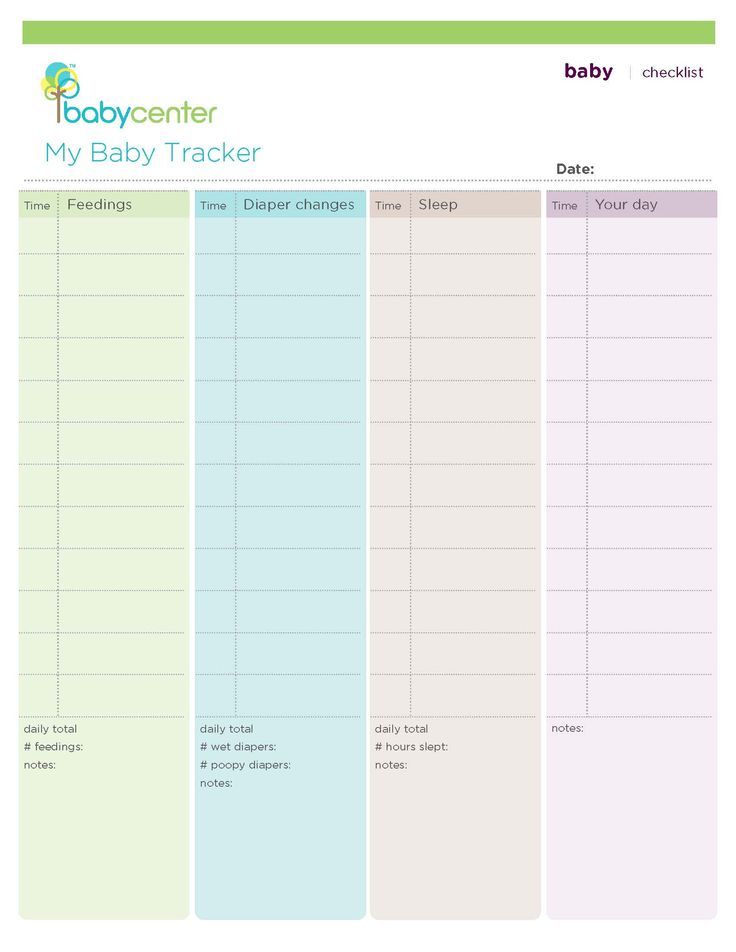
How to deal with anxiety
Veronika Khlebnikova
existential psychologist, blogger and mother of three children
To calm a child, you must first of all cope with your anxiety. I often communicate with parents who are not sure that they are doing the right thing in relation to the child. They think they are not up to the task. At such moments, you need to understand where your anxiety comes from. Then it will be easier for you to get rid of it.
What does not help with colic
Switching from breastfeeding to artificial feeding. No treatment algorithm recommends eliminating or reducing breastfeeding. This leads to the rapid disappearance of milk, increases the tension of the intestines of the child and weakens his immunity.
120,000 R
amount per year that artificial feeding can cost
The duration of baby crying may decrease when switching from breastfeeding to artificial feeding. But this is because breast milk is digested faster. As a result, the baby feels hungry more often and gets new portions of milk more often - it seems that during sucking he screams more often. And after the transfer to the mixture, he sleeps longer, which makes it seem that he has become better.
But this is because breast milk is digested faster. As a result, the baby feels hungry more often and gets new portions of milk more often - it seems that during sucking he screams more often. And after the transfer to the mixture, he sleeps longer, which makes it seem that he has become better.
Colic is three to five months, and breastfeeding should continue longer. The decision to cancel it must be taken very carefully.
Acid suppressive therapy. Proton pump inhibitors such as omeprazole are not effective in treating infantile colic. Their effectiveness is not higher than that of placebo.
Painkillers. Evidence for the effectiveness of pain relievers for treating infantile colic is sparse and biased. Their use is not recommended without a doctor's prescription.
Homeopathic preparations. They are used at very low doses, their mechanism of action is not clear, and their effectiveness has not been proven. They are not recommended for the treatment of colic in children.
They are not recommended for the treatment of colic in children.
Use of homeotic remedies in infantile colicPDF, 260 KB
Drinking water. Breast milk is more than 80% water. It is enough to quench the thirst of a child up to four to six months, even in the heat. Supplementing babies with water puts them at risk of diarrhea and malnutrition. It can also cause the baby to suckle less at the mother's breast, producing less and less milk, and stop breastfeeding too soon.
WHO: why is it harmful to give water to infants
Phytotherapy. Few studies have been done on the effectiveness of various herbs. Chamomile, peppermint, lemon balm, licorice, and dill water are reportedly no more effective than placebo. Some herbs can be dangerous for a child and cause allergies. For example, fennel in large quantities can cause vomiting and impair the functioning of the baby's muscles. This is the same plant, from the essential oil of which "dill water" is made.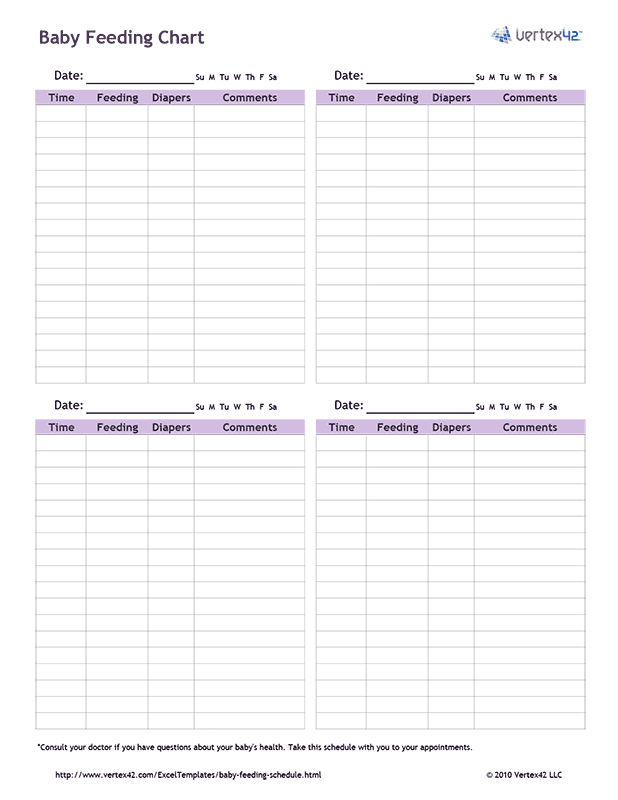
Simethicone. This is a synthetic substance that reduces bloating. Included in, for example, "Bobotika", "Espumizan baby", "Sub simplex". Simethicone is not absorbed, it acts only in the intestinal lumen on gas bubbles, which causes them to disintegrate. No study has proven that the use of simethicone is effective in treating colic in children.
390 Р
average price per bottle of simethicone
If colic is mainly due to increased gas formation, then simethicone can help. You can only find out by trying. If after a week of taking you have not noticed any difference in the frequency and intensity of colic attacks, it is pointless to continue using it.
Tea for lactation. Hot drinks are generally not prohibited. It promotes the release of oxytocin, relaxes and calms. And it is easier for a calm mother to cope with a crying child. But herbal tea can be harmful for both mother and child. For example, fennel, lemon balm and sage reduce lactation. Carefully read the composition and recommendations for the amount of tea so as not to overdo it.
For example, fennel, lemon balm and sage reduce lactation. Carefully read the composition and recommendations for the amount of tea so as not to overdo it.
E-Lactanciya: compatibility of medicines and herbs with breastfeeding
Chiropractic, osteopathy. These are alternative medicine methods that use physical manipulations such as stretching and massage. Studies have shown that chiropractic and osteopathy are not effective for treating colic. The safety of these methods for children has not yet been proven.
Manipulative techniques for the treatment of infantile colic, article in Pubmed
Acupuncture, or acupuncture. Proponents of the method insert fine needles into the skin at certain points. They believe that the impact on these points restores vital energy, and pain goes away from this. Acupuncture is useless and is not recommended for treating colic. The safety of this method has also not been proven.
A review of the effectiveness and safety of acupuncture for colic in infants, article in Pubmed
When colic in newborns goes away three days a week, and ends by three months.

Rome IV Criteria: Functional Gastrointestinal Disorders in ChildrenPDF, 828KB
Since 2016, colic has been considered to last up to five months. After that, the baby begins to cry less often. If after five months the crying time has not decreased, you need to contact your pediatrician.
Prevention of colic in newborns
There is no method of prevention that would prevent colic. But proper feeding will help ease their flow and reduce the duration.
Keep your baby on your tummy for as long as possible before each feed. Start with two to five minutes, gradually increasing the time. By three months, the baby can lie on his stomach for about an hour a day.
Attach the baby correctly to the breast: not only the nipple, but also the areola should be in the mouth.
Mayo Clinic Feeding Position Slideshow
Carry your baby upright for 5 to 15 minutes after each feed to burp up any swallowed air. If feeding at night, lay the baby so that his head was raised.